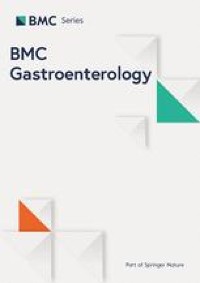Typhoid fever presenting with gastric ulcer bleeding - BMC Gastroenterology - BMC Gastroenterology

This is a case of a 32-year-old woman who presented with melena, fever, and right upper quadrant pain, was diagnosed with enteric fever with gastric ulcer bleeding, and treated with antibiotics and proton pump inhibitor. Gastrointestinal bleeding has been reported in 10% of enteric fever patients [5]. However, most of the gastrointestinal bleedings with enteric fever reported in the literature were related to small intestine or colonic lesions. In one study, analyzing the endoscopic findings in patients with enteric fever and gastrointestinal bleeding, the most commonly affected site was the terminal ileum, followed by the ileocecal valve, ascending colon, and transverse colon. Multiple variable-sized punched-out ulcers with slightly elevated margins were representative endoscopic findings [8]. Although there are many studies on lower gastrointestinal bleeding in patients with enteric fever, upper gastrointestinal bleeding has rarely been reported in patients with enteric fever. There have been only a few reports on patients, who presented with melena, diagnosed with aortoduodenal fistula associated with nontyphoidal Salmonella aortitis [9, 10]. Harza et al. recently reported the case of a patient with enteric fever, who presented with hematemesis and melena, were diagnosed with primary aortoduodenal fistula due to infected aortic aneurysm with Salmonella enterica serovar Typhi infection, and underwent emergency endoaneurysmorrhaphy [11]. However, cases of enteric fever, presenting with gastric ulcer bleeding, have not been reported until now. To the best of our knowledge, this is the first case report of enteric fever presenting with gastric ulcer bleeding. The most common causes of peptic ulcer disease are Helicobacter pylori infection and ingestion of nonsteroidal anti-inflammatory drugs (NSAIDs). Helicobacter pylori was not identified in gastric biopsy specimens from our patient, and she had no history of taking NSAIDs or other ulcerogenic drugs. Also, she was not taking any proton pump inhibitors, antibiotics, or bismuth compounds that could cause the missed diagnosis of Helicobacter pylori infection. Moreover, she was young and no had underlying disease. Therefore, gastric ulcer bleeding in our patient can be presumed to be caused by Salmonella enterica serovar Typhi infection. Enteric fever induces various clinical symptoms by forming typhoid nodules, which indicate lymphoid hyperplasia, in the reticuloendothelial system, including the liver, spleen, and other lymphoid organs. Mucosal ulcer formation or ulcer bleeding occurring in the lower gastrointestinal tract was also associated with mucosal ulceration secondary to hyperplasia of the Peyer's patches or lymphoid follicles. However, the mechanism behind gastric ulcer formation in the present case is unclear. Interestingly, an experimental study involving Salmonella enterica serovar Typhimurium-infected mice, frequently used as an animal model for enteric fever, found that Salmonella enterica serovar Typhi infection may induce hemorrhagic ulcers by promoting gastric oxidative stress. Ofloxacin, lysozyme chloride, and oxyradical scavengers, including glutathione, allopurinol, and dimethylsulfoxide ameliorated hemorrhagic ulcer formation [12]. Another study using rats reported that Salmonella enterica serovar Typhi infection may cause hemorrhagic gastric ulcers by increasing histamine secretion and vascular permeability [13].
Despite these findings, there have been no reported cases or mechanistic studies of enteric fever accompanied by gastric ulcer bleeding. Our patient, who presented with gastric ulcer bleeding, was discharged after her symptoms had improved with antibiotic treatment. However, she was readmitted due to recurrence with a positive blood Salmonella enterica serovar Typhi blood culture. Based on this finding, the factors associated with the relapsing enteric fever could be related to the development of gastric ulcer bleeding. Enteric fever can relapse within one month in about 5–10% of patients [3, 4]. Several studies have reported that the gallbladder or mesenteric lymph node served as niches for persisting Salmonella, but the mechanism behind relapsing enteric fever remains unclear [14, 15]. Further studies on the mechanism underlying recurrent enteric fever could explain the cause of gastric ulcer bleeding which is a rare clinical symptom of enteric fever.
In conclusion, our case suggested that, although rare, peptic ulcers could develop in patients with enteric fever. Upper gastrointestinal bleeding as well as lower gastrointestinal bleeding should be suspected in patients exhibiting symptoms suggestive of gastrointestinal bleeding, especially presenting relapsing bacteremia.


Comments
Post a Comment